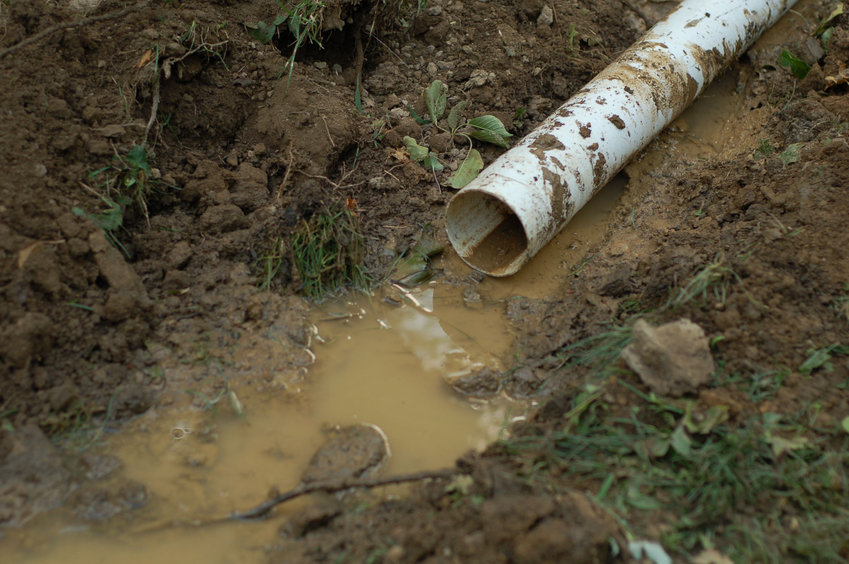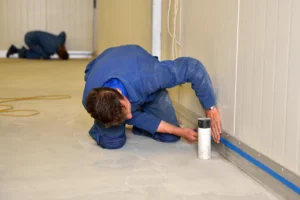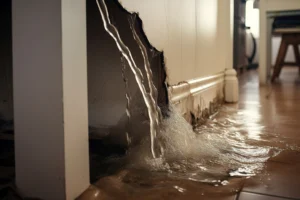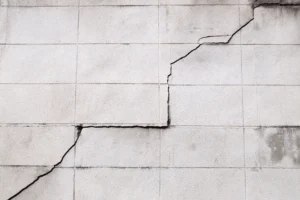French drains are a popular solution for managing water flow and reducing the risk of basement flooding. They are relatively easy to install and can be a great way to save money compared to hiring a professional. However, without proper knowledge and preparation, it is easy to make mistakes that can lead to costly repairs or even render the drain system ineffective.
Here are 7 common DIY French Drain mistakes to avoid:
Ignoring The Water Source
The first mistake is not identifying the source of water that you are trying to divert. A French drain should not be installed as a standalone solution, but as part of a comprehensive plan to manage water flow. If you have a problem with groundwater, a French drain may not be enough to solve the problem. If your home is surrounded by high ground, you may also have to address the problem by installing retaining walls or other structures to prevent water from pooling in the area where the French drain is installed.

Not Choosing The Right Pipe
A common mistake is not selecting the right type of pipe for your French drain. There are two main types of pipes commonly used for French drains, PVC and corrugated plastic. PVC is more durable and has a longer lifespan, but it is more expensive and can be difficult to work with. Corrugated plastic is a more cost-effective option, but it is more prone to damage and can become clogged over time. When choosing a pipe, consider factors such as the type of soil, the location of the drain, and the amount of water flow you expect to have.
Incorrect Trench Depth
Another common mistake is not digging the trench deep enough. A French drain must be buried deep enough to be effective and to prevent water from seeping through the sides of the trench. The depth of the trench should be at least 2 feet, but this may vary depending on the location and the type of soil. The depth should also be consistent along the length of the trench, so that water is directed into the drain and away from your home.
Improper Pipe Placement
Another mistake is not placing the pipe correctly in the trench. The pipe should be placed in the center of the trench and should be surrounded by gravel on both sides to ensure proper drainage. The pipe should also be sloped towards the discharge point to ensure that water flows towards the discharge point and not back into your home.
Not Considering The Discharge Point
One common mistake is not considering the discharge point of the French drain. The discharge point should be located at a low point in the landscape and should be directed away from your home to prevent water from seeping back into your basement. If you have a sump pump, the discharge point should be connected to the pump to ensure that water is pumped away from your home.
Not Testing The System
Another mistake is not testing the system after installation. It is important to test the French drain to ensure that it is working properly and that water is flowing away from your home as expected. A simple way to test the drain is to fill the trench with water and observe the flow. If you see water pooling in the trench, it may indicate that the pipe is clogged or the trench is not sloped correctly.
Not Maintaining The System
The final mistake is not maintaining the system. A French drain requires regular maintenance to ensure that it continues to work effectively. The pipe should be inspected regularly for clogs and debris, and the gravel should be checked for compaction and replaced if necessary.
Conclusion
Installing a French drain yourself can save you money, but it’s important to do it correctly to ensure proper function. By avoiding these seven common mistakes, you can ensure your French drain is installed effectively and will provide the protection you need for your foundation or yard. If you’re unsure about any aspect of the installation process, it’s best to consult a professional to ensure it’s done right the first time.



